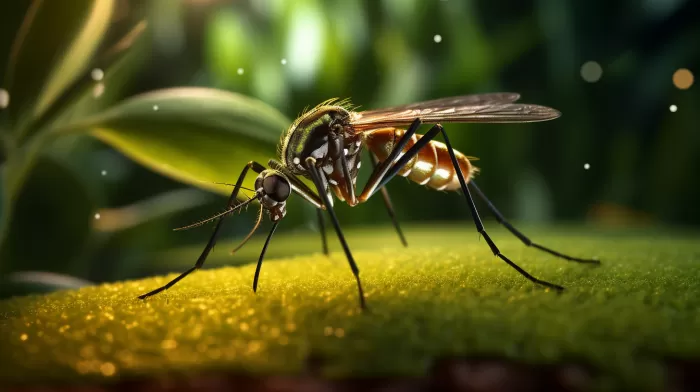Tropical diseases could soon be making an unwelcome appearance in your neighborhood. Mosquitoes known for causing illnesses, such as yellow fever, chikungunya, and dengue, are now being discovered in the United States. With their expanding territory, these disease-carrying insects have the potential to change the way we go about our daily lives. Read on to learn about these dangerous mosquitoes and how to protect yourself and your loved ones from the illnesses they carry.
Yellow Fever Mosquitoes on the Move
California’s insect-control bureaus have been trapping mosquitoes to monitor which species have made their way into the state. Their recent finds are quite alarming: the yellow fever mosquito (Aedes aegypti) has been discovered this summer. This mosquito is known to spread various nasty diseases, such as yellow fever, dengue, and chikungunya.
Tim Phillips of the Fresno Mosquito and Vector Control District commented on the severity of the situation in the Los Angeles Times, stating, “It could change the way we live in California if we don’t stop it. Imagine not feeling safe to sit out in your backyard in the afternoons.”
The Dangers of Yellow Fever, Dengue, and Chikungunya
While these diseases may sound foreign, it is essential to understand the symptoms and risks associated with each one.
Yellow fever is a viral disease that can lead to symptoms like chills, fever, backaches, headaches, and nausea. In severe cases, jaundice may develop – hence its name – and it can even be fatal.
Dengue affects the muscles and causes a rash. Like yellow fever, it can also be a life-threatening illness. According to the World Health Organization, there are around 100-400 million dengue infections worldwide each year.
Chikungunya causes high fevers, rashes, and prolonged joint pain. Although it is rarely fatal, chikungunya can cause severe and long-lasting discomfort.
Leonard Irby, the district manager of the Madera, California abatement program, emphasizes that the dangers affect everyone: “This affects all of California,” he told the LA Times.
How to Protect Yourself and Your Environment
The spread of these illnesses requires a community effort to reduce the mosquito population and protect against bites. The following proactive measures can help keep you and your loved ones safe:
- Eliminate standing water: Mosquitoes lay their eggs in stagnant water. Regularly check and empty any containers that may collect water, such as plant saucers, garden pots, and children’s toys. Remember that even the smallest amount of water, such as what collects on a cement crack or a bottle cap, can become a breeding ground.
-
Maintain your yard: Keep your yard clean and free of debris. Trim shrubs and grass regularly to eliminate mosquito hiding spots, and clean gutters to prevent standing water.
-
Use mosquito repellents: Apply mosquito repellents containing active ingredients like DEET, picaridin, or oil of lemon eucalyptus. The CDC recommends using registered products that meet the Environmental Protection Agency’s (EPA) safety and efficacy criteria.
-
Wear protective clothing: Opt for long-sleeved shirts and pants when spending time outdoors in mosquito-prone areas. Lightweight, loose-fitting clothes are also a good option for staying cool while still protecting your skin.
-
Install screens on windows and doors: Installing screens on windows and doors will help keep mosquitoes out of your home, significantly reducing the chances of an indoor bite.
-
Stay informed about your local mosquito population: Pay attention to local news and public health announcements about mosquito activity, especially during peak mosquito season, which is typically between late spring and early fall.
-
Ensure your community is involved: Collaboration is key in the fight against mosquito-borne diseases. Encourage neighbors and local businesses to maintain their properties and eliminate standing water. Reach out to your city or county’s vector control program for advice and support.
By taking these precautions, you and your neighborhood can work together to minimize the spread of yellow fever, dengue, and chikungunya in the United States.
In conclusion, the expansion of the yellow fever mosquito’s territory poses a significant threat to public health. As individuals and communities, we must take a proactive approach to eliminating mosquito breeding grounds and protecting ourselves against bites. Only then can we prevent the spread of these dangerous tropical diseases and maintain our quality of life.



